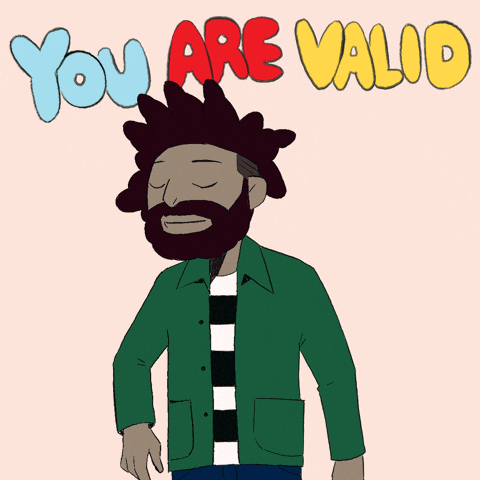Before we explode into cross correlations, let’s first come to a staggering statistic that anorexia is responsible for 10% of all psychiatric disorders with the highest mortality risk. It’s also estimated that 13% of women experience anorexia before the age of 20. What’s more – only about 1/2 of sufferers actually have the benefit of long term recovery ,,(source).
Let that sink in a moment.
Meanwhile – consider a time in your past when foregoing food despite your body’s hunger for it, you abstained from eating for the purpose of starving. And if it wasn’t a conscious decision to starve – maybe the subconscious drive to deprive yourself due to a sense of unworthiness, not being good enough, being too much, taking up too much space, you were mad at yourself or maybe your jeans just didn’t fit quite right – the list goes. Today that might be construed by efforts to Intermittent Fast, as fasting has become one of the latest health trends. For someone with anorexia, this is the daily obsession and moment to moment reality and all those thoughts feelings and emotions apply 24/7. Bulimics, on the other hand, pursue the thought of eating but take further action to rid the body of any self imposed weight or calories through purging, exercise or excessive laxative use.
Has this been you or someone you love? It’s really really easy to assume this disorder begins in the mind since after all, where do thoughts originate? But please, read on.

Sadly traditional treatments for eating disorders such as psychotherapy, cognitive interventions and medications have pretty low success rates. We continue to point to the mind as the culprit, family therapy for the multigenerational implications, genetics to the genes and to the environment as we debate over nature/nurture – and we keep parlaying and getting no where fast.
But like everything else around us – things are changing. People are getting smarter and science more innovative. Today, with less than desirable advancements in recovery, researchers are pointing to the gut as home base for the cause of eating disorders due to their inextricable link to mental health.
The Gut – Brain axis is a bidirectional pathway that goes ,between the central nervous system and the enteric nervous system – ,which is where we get the term “second brain” – and, links the emotional and cognitive centers of the brain with intestinal functions. Therefore the trillions of bacteria in the gut are communicating with the brain via the central nervous system and affecting how neurotransmitters are wiring, how hormones are functioning, and how inflammation is…inflaming…you get the idea. So when it comes to the pathogenesis (the manner of development of a disease) of disorders like anorexia and bulimia, researchers are unraveling a host of microbiome alterations. Modifications in the numbers of specific microbes may contribute to eating disorders because when the gut biome changes – just about everything else does too.
This is observed as:
– decreased microbial diversity
– which affects metabolism, hunger and satiety – that fullness factor
– which create metabolic shifts that worsen dysbiosis (microbial imbalance)
– which causes depression
– which leads to poor eating habits, thus reinforcing everything else ♲
Have you or a woman you know lost their period for a number of months or years? Have those symptoms been resolved? It turns out the microbiome, which is an endocrine organ, holds the key to much of our healing. I can personally attest to this as a woman who didn’t menstruate for 10 years – that decade of my life was wrought with depression, anxiety, obsessive compulsive tendencies and you guessed it, a highly restrictive, highly limited diet.
When eating habits go down hill guess what else does? Our immunity. A key gut phenomenon includes short chain fatty acid production like butyrate who’s main function is to support digestive health, control inflammation and prevent leaky gut. To make butyrate, our gut bacteria transforms the dietary fiber we eat found in whole, unadulterated foods. These are called prebiotics who’s function is to encourage the health-promoting activities of beneficial bacteria in the gut microbiome. The gut lining requires butyrate because butyrate is the guts’ intestinal barrier – allowing things like vitamins and minerals to exit, enter the bloodstream, and travel to where they’re needed. A healthy gut lining also stops toxins, pathogens, and food compounds from entering the bloodstream which would otherwise make us ill. Now take someone who has deprived their body of vital nutrients and have them start eating again = the caloric intensity tends to cause so much discomfort mainly due to the absence of microbial diversity that has been lost through starvation that they often relapse. Hence why 1/2 of anorexics don’t recover. Once a person’s microbiome is low in diversity anxiety and depression are much more likely to occur. Eating, at this point, has to be therapeutic.
Metabolism and psychological wellbeing are interconnected. While eating disorders may have both biological as well as environmental roots, it goes without saying that once the microbiome shifts, everything else does too. What we eat has always mattered. Below is a list from the authors/researchers at VIOME who discovered microbial trends amongst 15 women with anorexia nervosa. What is shown are alterations in the gut microbiome being associated with all sorts of metabolic and psychological dysfunctions (,source):

Serotonin – the neurotransmitter that contributes to well-being and happiness—is made in the gut, 90% of it in fact. When we interfere with normal serotonin production through deprivation we keep the vitamins and minerals found in a wide variety from all food groups from acting as ‘spark plugs’ to ignite the production of the gut serotonin itself.
And right when microbial diversity seemed to be the cure all, they had to go and throw this in there ⇣

Good ol’ chicken and the egg – who’s hungry?…
As if things weren’t complex enough, did you know that b,acteria generate electricity for the same reason we breathe oxygen: to remove electrons produced during metabolism and support energy production? The physiology of bacteria that people didn’t realize existed could be, and is in fact being manipulated by people such as Dr. Corey Deacon.

So now that we have woken up – to a large extent – the immense ways the gut plays a role in our mental and physical health (of which those few paragraphs above only scratched the surface), what does Therapeutic Eating have to do with any of it?
Well, are the origins of eating disorders biological or environmental? Which came first, the chicken or the egg? In metaphysical/intellectual & spiritual terms, does the universal frequency of the law of attraction care more about where we came from or where we are now? I don’t want to go too left field – not after all of that sciencey talk but let’s play for a moment with a term I should probably trademark at this point called:
✳︎ Gut Consciousness ✳︎
Trauma, which is experienced by up to 70% of adults in the US alone (that’s 224 million people) imbeds itself in our decision making processes. Most severe trauma has neurochemical responses that outlive the original threat (the crash, the violence, the neglect, the abandonment) and inhibit the system’s ability to return to normal. No trauma, big or small, should be discounted when it comes to your well being. As I mentioned above, Dr. Corey Deacon a major purveyor in the study of brain injuries and their consequential effects on the gut biome, not to mention their electrical output, says that no injury to the head should be discounted. And that includes those minor bumps and bruises we pass off as nothing (no mama, your tot need not wear a helmet to daycare). We’re sensitive beings – not that we can’t get roughed up from time to time – but without sensitivity to our recovery during what seems like “life itself” we impose these unconscious wounds on others and perpetuate them unknowingly. Ever wonder why you do what you do – or crave what you crave? Our bodies are constantly talking to us. This is our gut conscience. You have one, I have one and you and I are really good at ignoring them! Lol…
By slowing down, taking time to breathe, set clear intentions, process deep emotions, respond to the body’s need for nurturance and nourishment we trigger what’s called the Vagus nerve which is the tenth cranial nerve and interfaces with the parasympathetic control of the heart, lungs, and digestive tract. We constantly eat on the run, grab & go, don’t think to ask, don’t think to tap in – and in fact when we’re thinking we’re often not listening anyway. So this is where Therapeutic Eating comes in.
The program walks you through a series of steps from:
␥ Your family history
␥ to Your narrative
␥ to Your sense of agency
␥ to Your intentions
␥ all the way to selecting foods that are right for your body (not mine, not your friends’, not according to Keto or Vegan principals – You) – and this takes bravery. Not dieting is courageous. Go you!
It’s therapeutic because 1. You are confronting yourself with your Self 2. Befriending your beast and 3. healing from the inside out.
Together or apart, the work begins when you meet the person you continually bring to the table (the kitchen, the fridge, the store etc). Asking “who” the person or entity or being is that is making the decisions. It’s so much about food – and so much NOT about the food. In essence, yes neutrality is key but I also believe there is room for desire, room for betterment, room to wanting, craving, indulgence. And this is where the mind comes in – we get to learn and adapt to creative ways to play with food to better our bodies which in turn betters our minds. The point is that we wake up out of our stupor – which in and of itself is impossible to avoid – and stay that way.
And for the record – you may wish to stay tuned for the nifty, delicious and versatile products I have in the works as I see them being well suited for Recoverees on the path to greater physical, mental and spiritual wellness. BLESSINGS to you my friend! Subscribe for more and keep coming back because this site is changing face soon and I’d love for you to witness its evolution.

And for fun! Because you deserve a recipe and so much more! Enjoy this simple 3 ingredient treat:
Chilled Watermelon – sliced in triangles
Drizzled with coconut butter
Sprinkled with cacao nibs

XO
References:





